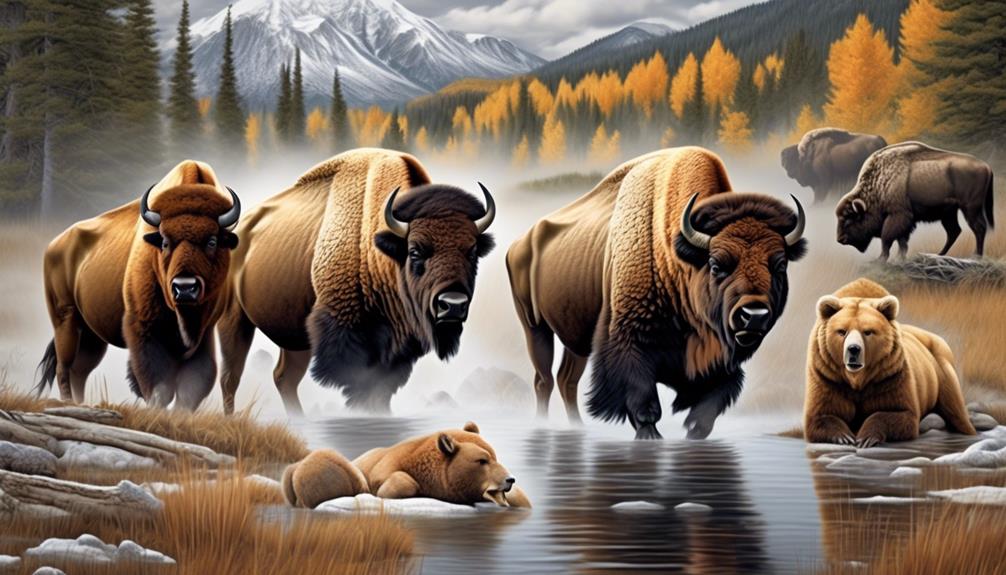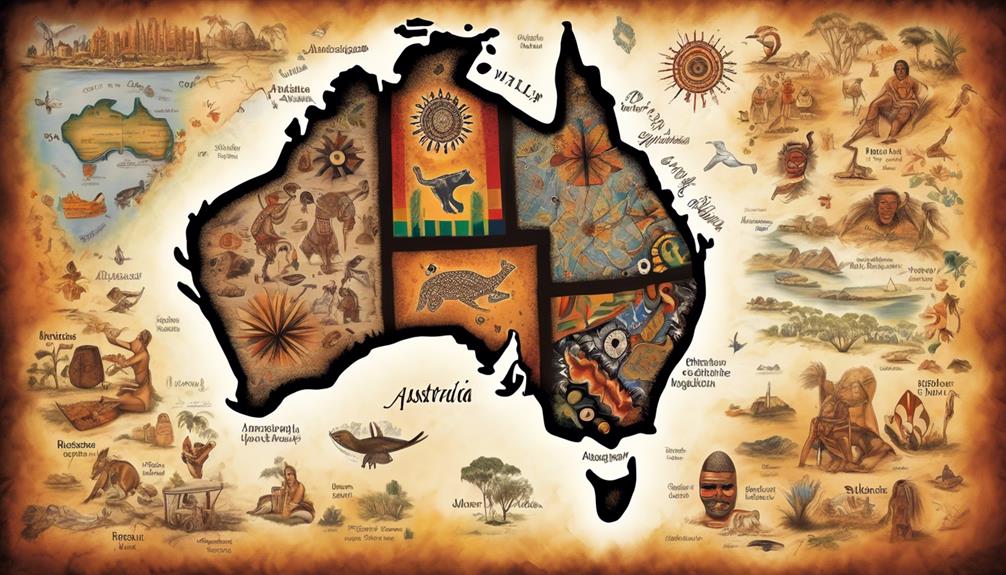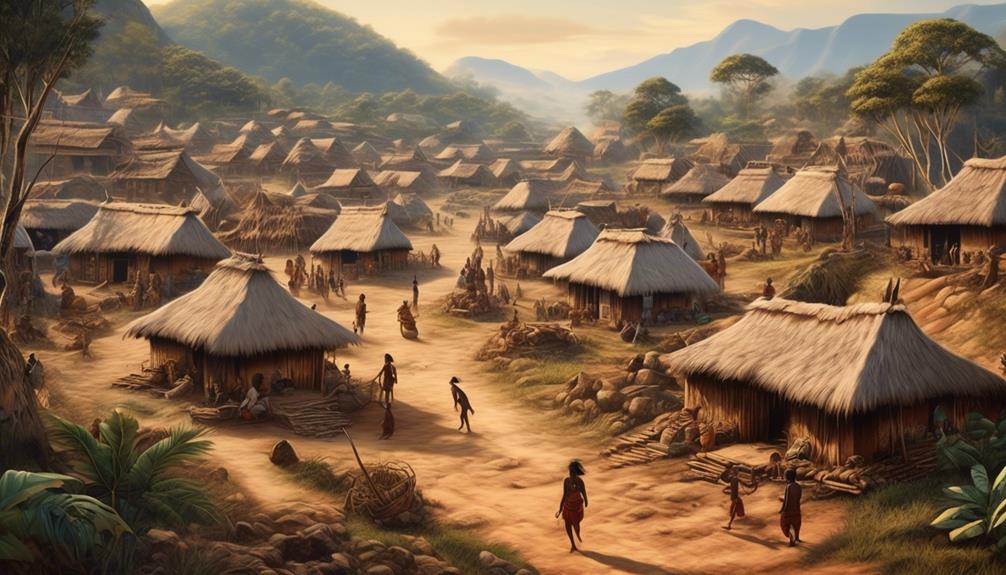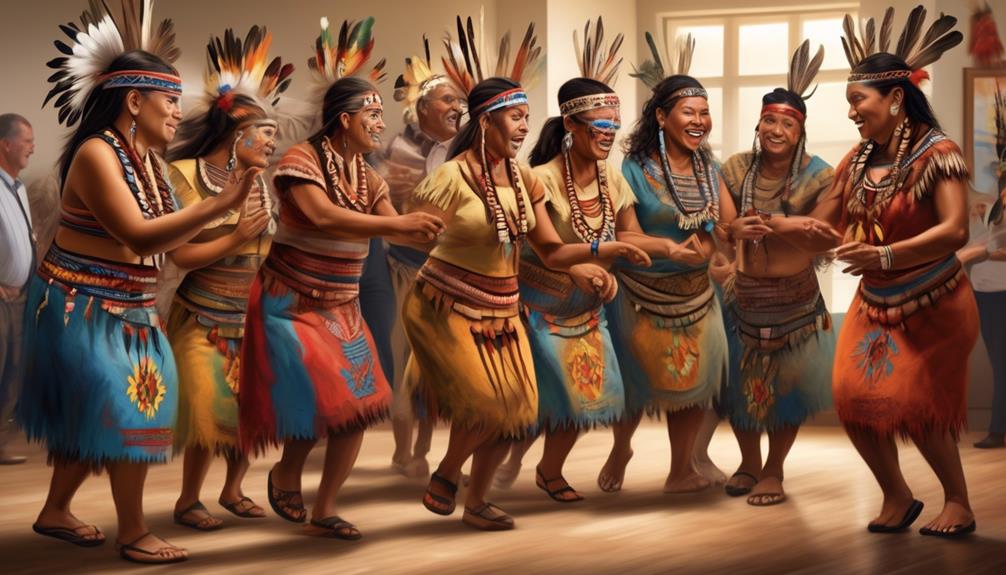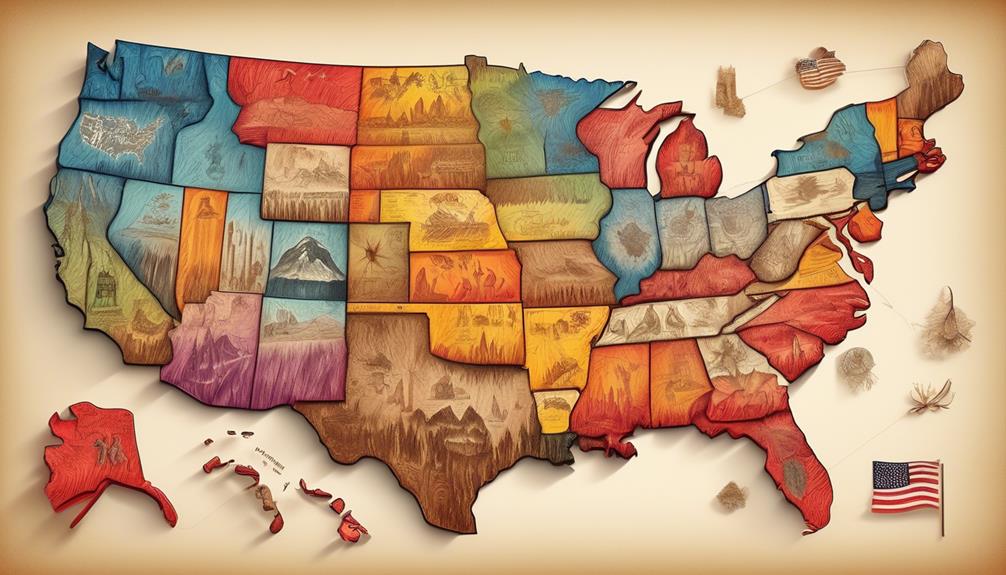Do you think you know all the native animals in North America? Let’s explore the diverse and fascinating variety of creatures that call this continent home.
From iconic mammals to unique insects, North America is teeming with a wide variety of native species.
But what exactly makes these animals indigenous to the region? Stay tuned to uncover the intriguing details behind the wildlife that defines North America.
Key Takeaways
- Grizzly bears, bison, mountain lions, and wolves are iconic mammals in North America that play vital roles in regulating prey populations, shaping physical geography, influencing vegetation abundance, and maintaining biodiversity.
- Bird migration and nesting habits of avian wonders contribute to the distribution of species, aid in the conservation of critical habitats, provide insights into ecosystem health, and impact the distribution of plants and other animals.
- Reptiles and amphibians in North America, such as turtles, frogs, and salamanders, play pivotal roles as ecosystem engineers in wetlands, contributing to nutrient cycling and regulating prey populations. Conservation efforts are crucial to protect these species.
- Coastal ecosystems in North America sustain a diverse range of marine life, including fish species, invertebrates, marine mammals, and seabirds. Preserving these habitats is essential for maintaining the ecological balance and productivity of the region.
Iconic Mammals of North America
North America's iconic mammals play crucial roles in shaping the continent's diverse ecosystems, contributing to the intricate web of life that sustains the region's biodiversity.
Among these, the grizzly bear and bison are integral to the continent's ecosystems. Grizzly bears, apex predators, help regulate prey populations, influencing vegetation dynamics and even shaping the physical geography through their foraging activities. Similarly, bison, through their grazing behaviors, have a profound impact on the structure and composition of grassland communities, affecting plant species diversity and even soil nutrient cycling.
Additionally, mountain lions and wolves are key players in North America's ecosystems. Mountain lions, as top predators, help control deer and elk populations, which in turn influences the abundance of vegetation and the presence of other species. Wolves, another apex predator, have cascading effects on ecosystems by regulating herbivore populations and, consequently, shaping plant communities and impacting smaller predator populations.
These iconic mammals aren't only symbols of the continent's wilderness but also vital components of its intricate and interconnected ecosystems, highlighting the delicate balance required to maintain the region's biodiversity.
Avian Wonders of the Continent
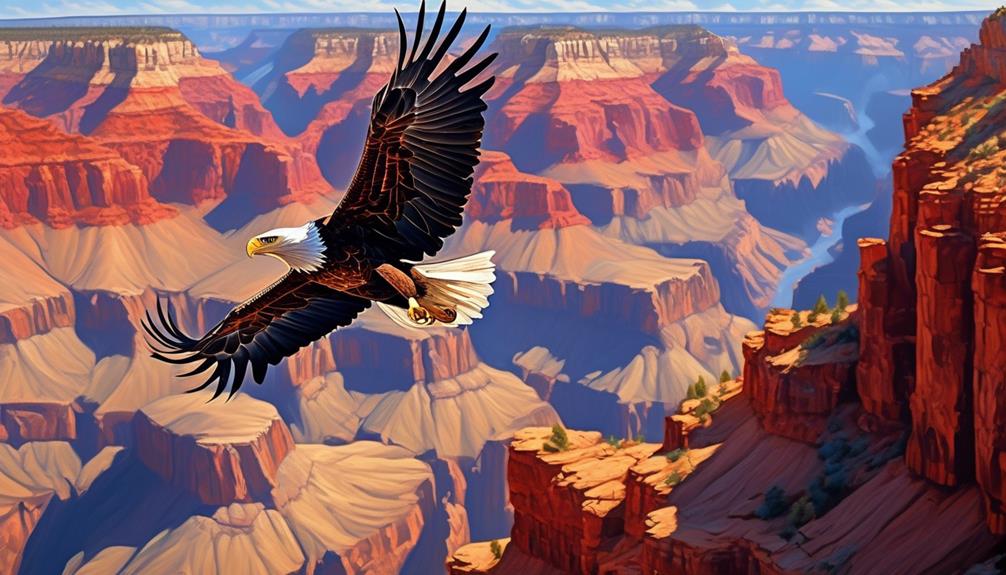
As we shift our focus to the avian wonders of the continent, the intricate ecological interactions and dynamics continue to unfold, revealing the critical roles played by North America's diverse bird species in shaping and sustaining the continent's ecosystems.
Bird migration, a marvel of natural history, sees millions of birds traveling thousands of miles between their breeding and wintering grounds. This movement not only influences the distribution of bird species but also has profound effects on the ecosystems they traverse. Understanding bird migration aids in the conservation of critical stopover habitats.
Nesting habits are equally fascinating, with North American birds displaying a wide array of nesting behaviors, from intricate woven nests in the forest canopy to simple scrapes on the ground. These nesting strategies are finely tuned to the specific ecological niches in which each species thrives, impacting the distribution of plants and other animals in their surroundings.
The careful study of nesting habits provides valuable insights into the health of ecosystems and the impacts of environmental changes on bird populations. By delving into the intricacies of bird migration and nesting habits, we gain a deeper appreciation for the vital roles that avian wonders play in North America's rich tapestry of life.
Reptiles and Amphibians in North America
Exploring the intricate interplay between reptiles, amphibians, and their surrounding ecosystems in North America provides valuable insights into the delicate balance of this continent's biodiversity. These cold-blooded creatures play vital roles in maintaining the health and equilibrium of their habitats. Here are some key aspects to consider:
- Wetland Habitats: Wetlands are critical to the survival of many reptiles and amphibians in North America. These environments provide essential breeding grounds, shelter, and food sources for a wide variety of species, including turtles, frogs, and salamanders.
- Biodiversity Hotspots: North America is home to numerous species of reptiles and amphibians, many of which are found nowhere else on Earth. The continent's diverse array of ecosystems, from the lush swamps of the Southeast to the arid deserts of the Southwest, support an impressive richness of reptile and amphibian life.
- Endangered Species: Unfortunately, many reptile and amphibian species in North America are facing threats to their survival. Habitat loss, pollution, and climate change are contributing to the decline of numerous species, making conservation efforts crucial to their preservation.
- Ecosystem Engineers: Reptiles and amphibians play pivotal roles as ecosystem engineers. They regulate prey populations, contribute to nutrient cycling, and serve as indicators of environmental health. Protecting these creatures is essential for maintaining the balance of North America's ecosystems.
Diverse Marine Life Along the Coast
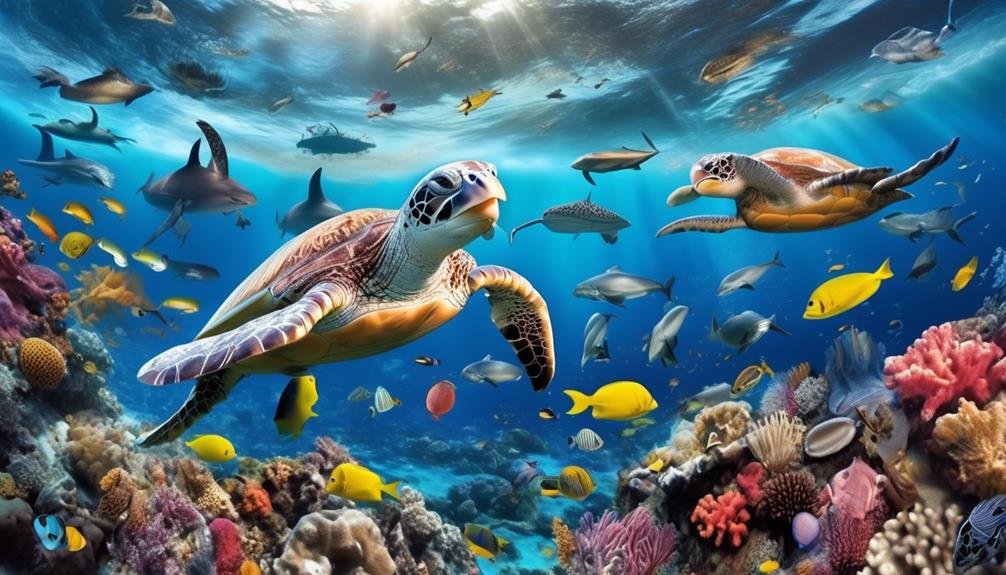
Teeming with a diverse array of marine species, the coastal ecosystems of North America serve as vital habitats for a wide range of organisms, playing a crucial role in the continent's biodiversity. The dynamic coastal environment, influenced by factors such as temperature, salinity, and nutrient availability, sustains a rich tapestry of marine life. From the intertidal zones to the offshore deep waters, these ecosystems support an astounding variety of species, contributing significantly to marine biodiversity.
| Marine Species | Coastal Zone | Notable Examples |
|---|---|---|
| Fish | Nearshore waters | Salmon, herring, rockfish |
| Invertebrates | Intertidal areas | Sea stars, crabs, mussels |
| Marine Mammals | Offshore regions | Whales, dolphins, seals |
| Seabirds | Coastal habitats | Gulls, puffins, cormorants |
The interactions within these coastal ecosystem dynamics are complex and fascinating. For instance, the abundance of plankton in nearshore waters sustains fish populations, which in turn support marine mammal and seabird communities. Understanding and preserving these ecosystems are crucial for maintaining the delicate balance of marine life and for ensuring the sustainability of coastal resources.
Unique Insects and Invertebrates of the Region
A diverse array of unique insects and invertebrates inhabit the coastal ecosystems of North America, contributing to the intricate web of life in the region. These remarkable creatures play vital roles in the functioning of these ecosystems, and their conservation is essential for maintaining the balance of the coastal environment.
Here are some key aspects to consider:
- Insect Diversity: The coastal regions of North America host a remarkable diversity of insects, including pollinators like butterflies and bees, as well as predatory insects that help control pest populations. The presence of these insects is crucial for maintaining the ecological balance of the coastal habitats.
- Ecological Importance: Insects and invertebrates are integral to the nutrient cycling and decomposition processes in coastal ecosystems. They contribute to soil formation, facilitate plant growth, and serve as a food source for various organisms, thereby influencing the overall health and productivity of the region.
- Invertebrate Conservation: Efforts to conserve and protect the unique invertebrates of North America's coastal areas are essential for maintaining biodiversity and ecosystem stability. This includes implementing conservation measures that safeguard their habitats and address threats such as habitat loss and pollution.
- Habitat Protection: Preserving the diverse habitats where these insects and invertebrates reside is critical for their survival. Coastal wetlands, dunes, and marshes provide essential environments for these creatures, and safeguarding these habitats is crucial for their long-term conservation.
Frequently Asked Questions
What Are Some Traditional Uses of Indigenous North American Animals by Native American Tribes?
Traditional practices, ethical hunting, indigenous animal symbolism, and medicinal uses are vital aspects of Native American culture.
Animals like the buffalo, deer, and bear hold significant symbolism and were hunted for food, clothing, and tools.
Medicinal uses of various animal parts were also common.
These practices reflect deep respect for the natural world and its resources, contributing to the rich tapestry of indigenous knowledge and traditions.
Are There Any Endangered or Threatened Species Among the Indigenous Animals of North America?
Endangered species face threats in North America, prompting vital conservation efforts. The delicate balance of our ecosystem hinges on safeguarding these organisms.
Conservation initiatives, such as habitat protection and breeding programs, aim to mitigate the risks. Our commitment to preserving biodiversity resonates in the tireless work to secure the future of indigenous species.
As stewards of this land, we must continue our efforts to ensure the survival of these unique and irreplaceable creatures.
How Have Indigenous North American Animals Been Impacted by Human Activity and Habitat Loss?
We've seen significant impacts on indigenous North American animals due to human activity and habitat loss.
Urbanization has caused habitat fragmentation, disrupting wildlife migration patterns and leading to human-wildlife conflicts.
Conservation solutions, such as creating wildlife corridors and protected areas, are vital to mitigating these effects.
It's crucial to understand the interconnectedness of ecosystems and the importance of preserving habitats to ensure the survival of indigenous species.
What Are Some Lesser-Known Indigenous Animals of North America That Are Not Commonly Discussed in Popular Media?
Conservation efforts and wildlife management are crucial for preserving biodiversity hotspots and ecological significance.
Many lesser-known indigenous animals in North America suffer from habitat loss and human activity. For example, the American pika, a small mammal, faces challenges due to climate change affecting its alpine habitat.
Understanding these challenges is vital for effective conservation and wildlife management to protect the diverse array of indigenous species in North America.
Are There Any Conservation Efforts Specifically Focused on Protecting Indigenous North American Animals and Their Habitats?
Conservation efforts focused on protecting indigenous North American animals and their habitats include wildlife rehabilitation, habitat restoration, and conservation education.
These efforts aim to engage the community in preserving the ecosystem. By rehabilitating wildlife and restoring their natural habitats, we contribute to the overall health and balance of the ecosystem.
Educating and engaging communities raises awareness and fosters a sense of responsibility towards the protection of indigenous North American animals and their habitats.
Conclusion
In conclusion, North America is home to a diverse array of indigenous animals. The region boasts a rich variety of mammals such as bison and grizzly bears. It is also known for its avian wonders like bald eagles and hummingbirds. Additionally, North America is home to a wide range of reptiles, amphibians, marine life, and insects. With its unique ecosystems and wildlife, North America truly is a melting pot of biodiversity.
It's like a whole new world waiting to be explored right in our own backyard.
Mary is a passionate writer who brings creativity and a fresh perspective to our team. Her words have the power to captivate and inspire, making her an essential contributor to our content. Mary’s commitment to storytelling and dedication to promoting Indigenous culture ensures that her work touches the hearts of our readers. We’re fortunate to have her as part of our team.
